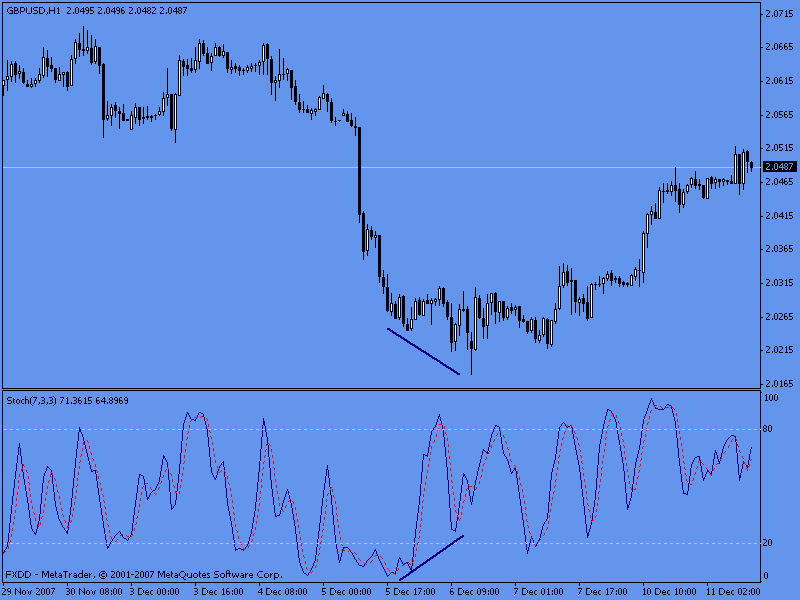Stochastics (STC)
Developed by George Lane in the 50´s. Stochastics compare the last closing price relative to its trading range over the chosen periods. The values of the stochastic oscillator range between 0 and 1, or more precisely between 0% and 100%.
When the reading of the oscillator is near zero, it indicates that the last period closing price closed near the bottom of the n-period range. A reading close to 1 indicates that the last period closing price closed near the top of the n-period range.
A 9 period stochastic will measure the last close relative to the last 9 periods low and high range.
There are three types of stochastics: fast, slow and full stochastics. The slow stochastic is simply a smoother (less whipsaws but less sensitive to price fluctuations) version of the fast stochastic. The full stochastic adds an additional parameter which makes it even smother than the slow stochastic.
Stochastic Usage
Usage No 1 – Overbought/oversold conditions
Stochastics are probably the most used indicator for these purposes. A buy signal is given when the readings are below 20% and rises above this level (buy signal – oversold condition). A sell signal occurs when the reading is above 80% and falls back down below that level (sell signal – overbought condition). When the market is trending, it is advised to take only those signals that are in direction of the trend.

[Chart 19]
As we already mentioned, stochastics are probably the indicator that gives overbought and oversold signals more accurately. The signal is triggered when the indicator returns to the neutral territory from an oversold or overbought condition.
Usage No 2 – Divergence trading
As other indicators, stochastics also give divergence signals.

[Chart 20]
This is the same chart we used for the RSI divergence. As you can see the RSI works better and signals a clearer divergence. Either way, the divergence is present.